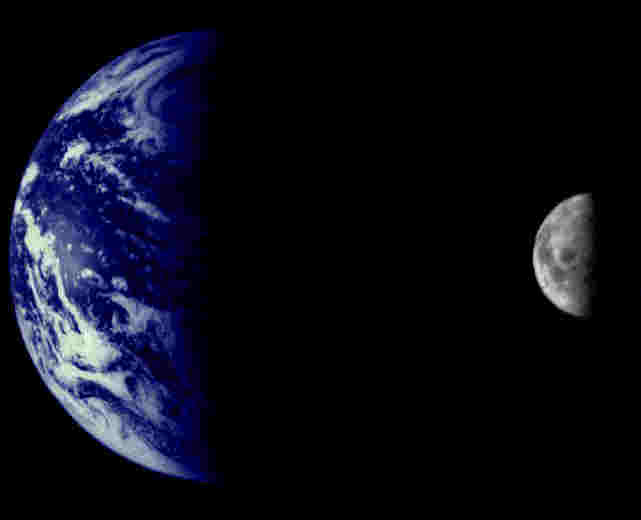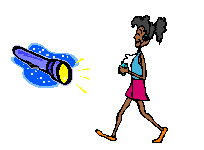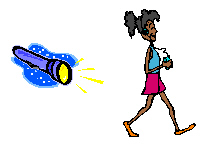BACKGROUND:
 The Earth is always rotating, spinning eastward. We do
not sense this motion, however, because everything else on the Earth’s
surface is moving as well. There is no independent frame of reference for
observing rotation. Viewed from space, however, the Earth is clearly
spinning. A point on Earth takes 24 hours to complete one rotation and come
back to its starting point. The Earth spins completely once in 24 hours or
in 1 day. The axis is the internal line around which the Earth rotates. The
axis is tilted 23.5o from an imaginary vertical line drawn
through the Earth.
The Earth is always rotating, spinning eastward. We do
not sense this motion, however, because everything else on the Earth’s
surface is moving as well. There is no independent frame of reference for
observing rotation. Viewed from space, however, the Earth is clearly
spinning. A point on Earth takes 24 hours to complete one rotation and come
back to its starting point. The Earth spins completely once in 24 hours or
in 1 day. The axis is the internal line around which the Earth rotates. The
axis is tilted 23.5o from an imaginary vertical line drawn
through the Earth.
Light
rays from the Sun touch only the side of the Earth that is facing the Sun.
While the Earth is spinning on its axis, it is also revolving around the
Sun.
The Moon revolves eastward around the Earth, taking
29.5 days to complete one orbit. The phases of the Moon are complex when
fully explained; at this point the students need to be able to distinguish
between a full Moon and a new Moon. A full Moon is when we see the complete
Moon from the surface of the Earth. This takes place when the Moon is in the
outer part of its orbit, and sunlight and reflected sunlight (from the
Earth) shine on it. During a new Moon, we cannot see any of the Moon in the
night sky. This occurs when the Moon is between the Earth and the Sun.
PROCEDURE:
- Have the students look at the planetarium.
Revolve the system. Make sure that they observe that the Earth is
spinning and turning at the same time. You may want to tell the students
that the Sun is also moving in space, but this model does not show it.
In reality, Venus and the Moon also move, but this model does not
illustrate this. This may differ, depending on the type of planetarium
system your school has available.
- Explain why the Earth has night and day. Divide the
students into groups of two. Give each group a flashlight. Instruct them
to think about creating day and night. Have one student be the Sun by
holding the flashlight. The other student is the Earth. You may want
this student to hold an inflatable world globe to be more realistic.
- Darken the classroom, and have a pair of students
"create night and day". You may need to give them detailed
instructions. Have the Earth students go into "day position"
by facing the Sun student, then in to "night position" by
facing away from the Sun. The correct positions are illustrated below.
Check each position. Have the students change
positions and repeat the exercise.
|
DAY
 |
NIGHT
 |
- Explain the difference between a new Moon and a
full Moon to the students. Group the students into threes. Have one
student be the Sun, one the Moon, and one the Earth. Again, have the Sun
hold the flashlight. This time the Sun will shine on the Moon.
The Earth student and the Moon student first
arrange themselves in the new Moon position, as shown in the diagram.
Make sure they see that the "sunlight" shines on the side of
the Moon away from the Earth. Next, have the Moon student revolve half
way around the Earth person. The key objective is for the students to
recognize there is a lot of motion occurring all the time in the Solar
System.